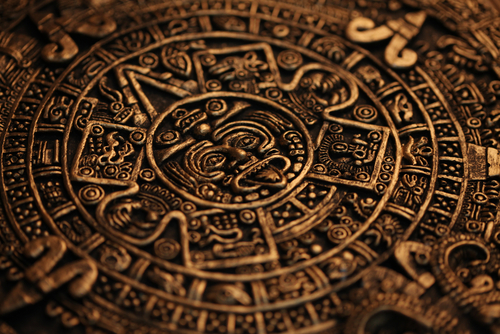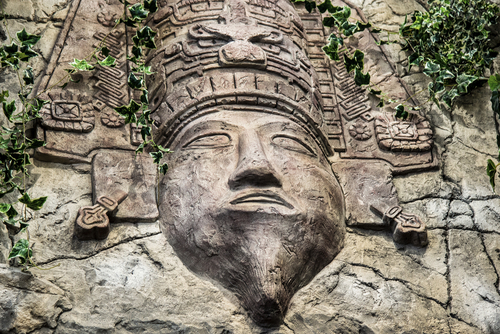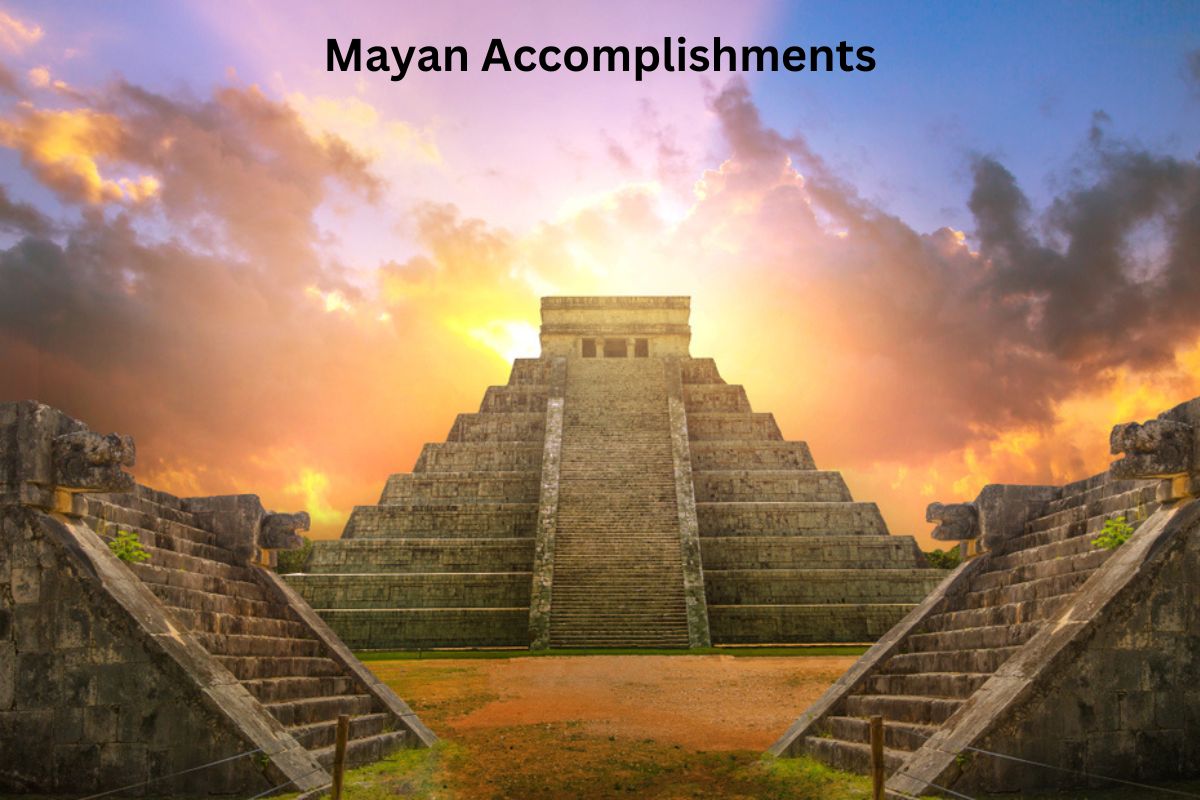The Maya civilization, an ancient Mesoamerican society that thrived from approximately 2000 BCE to 1500 CE, achieved remarkable accomplishments across various fields.
Renowned for their sophisticated hieroglyphic writing system, advanced calendar system, and profound understanding of astronomy and mathematics, the Maya left a profound impact on history.
Additionally, their expertise in urban planning, agricultural innovations, and extensive trade networks contributed to the flourishing of their city-states and the cultural richness of their society.
This brief introduction offers a glimpse into the fascinating world of the Maya and their significant contributions to human civilization.
Accomplishments of the Mayans
1. Hieroglyphic Writing System
The Mayan civilization developed one of the most sophisticated writing systems in the ancient world. Their hieroglyphic script consisted of a combination of logograms and syllabic symbols. The script was used to record historical events, religious beliefs, genealogies, and other aspects of their culture.
Also Read: Facts About the Mayans
The Maya inscribed these glyphs on various surfaces, including stone stelae, pottery, and bark-paper codices. Deciphering the script was a major challenge for modern scholars, but significant progress has been made in recent decades, allowing researchers to gain insights into the Mayan worldview, history, and daily life.

2. Calendar System
The Maya created a complex and accurate calendar system that served as the foundation of their society. They had multiple interrelated calendars to track various cycles of time. The Tzolk’in, also known as the sacred calendar, consisted of 260 days and was used for religious ceremonies and divination.
Also Read: Timeline of the Mayans
The Haab’ was a solar calendar with 365 days, used for agricultural and civil purposes. The Long Count calendar was used for recording historical events over long periods and marking significant dates.
The Maya’s calendar knowledge helped them organize religious festivals, agricultural activities, and social events with precision.
3. Astronomy and Mathematics
Astronomy played a vital role in the religious and cultural practices of the Maya. They were skilled astronomers who closely observed celestial bodies and planetary movements. They accurately calculated the cycles of the sun, moon, Venus, and other planets, which influenced their religious rituals and agricultural cycles.
The Maya developed sophisticated mathematical concepts, including a positional numeral system with a concept of zero. This numeral system allowed them to perform complex calculations, such as those required for astronomy, architecture, and trade.
Their astronomical and mathematical achievements were crucial for their advanced understanding of the cosmos and the precise construction of their monumental architecture.
4. City-States and Urban Planning
The Maya constructed impressive city-states throughout Mesoamerica, each functioning as an independent political and economic center. These city-states were characterized by monumental architecture, including temples, pyramids, palaces, ball courts, and plazas. Urban planning played a crucial role in the layout of these cities.
The Maya carefully designed their urban spaces, aligning buildings and structures with astronomical events and sacred directions. The cities often had a hierarchical structure, with the central area reserved for religious and governmental functions, while residential areas spread outward.
Sophisticated drainage systems were built to manage water flow and prevent flooding during the rainy season. These well-planned cities not only showcased the Maya’s engineering prowess but also provided centers for religious ceremonies, trade, and cultural activities.

5. Art and Sculpture
Mayan art and sculpture were highly refined and expressed their religious beliefs, history, and social structure.
The Maya produced various art forms, including pottery, murals, and intricately carved stonework. Their art often depicted scenes from religious rituals, mythological narratives, and the lives of rulers and nobles.
They excelled in pottery, creating exquisite vessels with intricate designs and ornamental motifs. They also carved stelae and monuments with hieroglyphic inscriptions to commemorate historical events and record the lineage of rulers.
The Maya’s artistic achievements reflected their rich cultural heritage and served as a means of transmitting knowledge and preserving their history for future generations.
6. Agricultural Innovations
The Maya developed advanced agricultural practices that allowed them to support growing populations. They practiced various agricultural techniques, including terracing, raised fields, and irrigation systems.
Terracing involved cutting flat platforms into hillsides to create agricultural plots, effectively preventing soil erosion and optimizing land use. Raised fields, also known as chinampas, were artificial agricultural islands built on shallow lake beds, providing fertile soil for farming.
The Maya ingeniously used the region’s natural resources to construct complex irrigation systems to channel water from rivers and cenotes (natural sinkholes) to their fields. These agricultural innovations not only ensured food security but also contributed to the growth and prosperity of their city-states.
7. Trade Networks
The Maya had extensive trade networks that connected different regions of Mesoamerica. Their strategic location allowed them to access a wide range of valuable resources.
They traded various goods, including cacao, used to make chocolate, precious stones like jade, obsidian for crafting tools, textiles, pottery, and agricultural products.
Trade played a crucial role in the cultural exchange between different city-states, facilitating the spread of ideas, technology, and artistic influences.
It also led to the development of social hierarchies and economic specialization, as certain city-states became centers of specific crafts or resources. The Maya’s sophisticated trade networks contributed to the wealth and cultural richness of their civilization.
8. Religious and Ceremonial Centers
The Maya constructed elaborate religious and ceremonial centers in their city-states. These centers served as focal points for their spiritual and social lives. The architecture in these centers was designed to reflect the Maya’s religious beliefs and cosmology.
The most prominent structures were temples and pyramids dedicated to various deities. These structures often had stairways and terraces leading to the temple’s summit, where rituals, offerings, and ceremonies took place.
Ball courts were also essential features of these centers, where the Maya played the Mesoamerican ballgame, a ritualistic sport with symbolic and religious significance.
Plazas in these centers were used for community gatherings, market activities, and public events. The ceremonial centers were not only places of worship but also hubs of political and social activity, reinforcing the power and authority of the ruling elite.
9. Mathematical and Astronomical Knowledge in Architecture
The Maya’s advanced mathematical and astronomical knowledge found practical application in the design and construction of their architectural masterpieces.
They aligned many of their structures with celestial events, such as the position of the sun during solstices and equinoxes. This astronomical alignment is evident in the orientation of temple staircases and the positioning of windows and doorways.
For instance, during certain astronomical events, sunlight or moonlight would shine through specific openings, highlighting particular areas within a temple. The Maya’s mathematical understanding allowed them to calculate precise measurements for constructing monumental buildings, ensuring stability and longevity.
The incorporation of celestial alignments in their architecture showcased their spiritual connection to the cosmos and their sophisticated engineering skills.
10. Engineering and Water Management
The Maya were skilled engineers who developed innovative techniques for water management. They constructed elaborate systems of reservoirs, canals, and water storage facilities to manage water supply during both rainy and dry seasons.
These engineering feats were crucial for supporting agricultural activities, especially in regions with irregular rainfall patterns. The Maya ingeniously captured and stored rainwater in cisterns and artificial reservoirs to ensure a constant water supply for their communities and crops.
Additionally, the Mayans channeled water from natural sources like rivers and cenotes to irrigate farmland and supply water to their city centers. The effectiveness of their water management systems contributed to the success and sustainability of their civilization, allowing them to thrive in diverse ecological settings.
